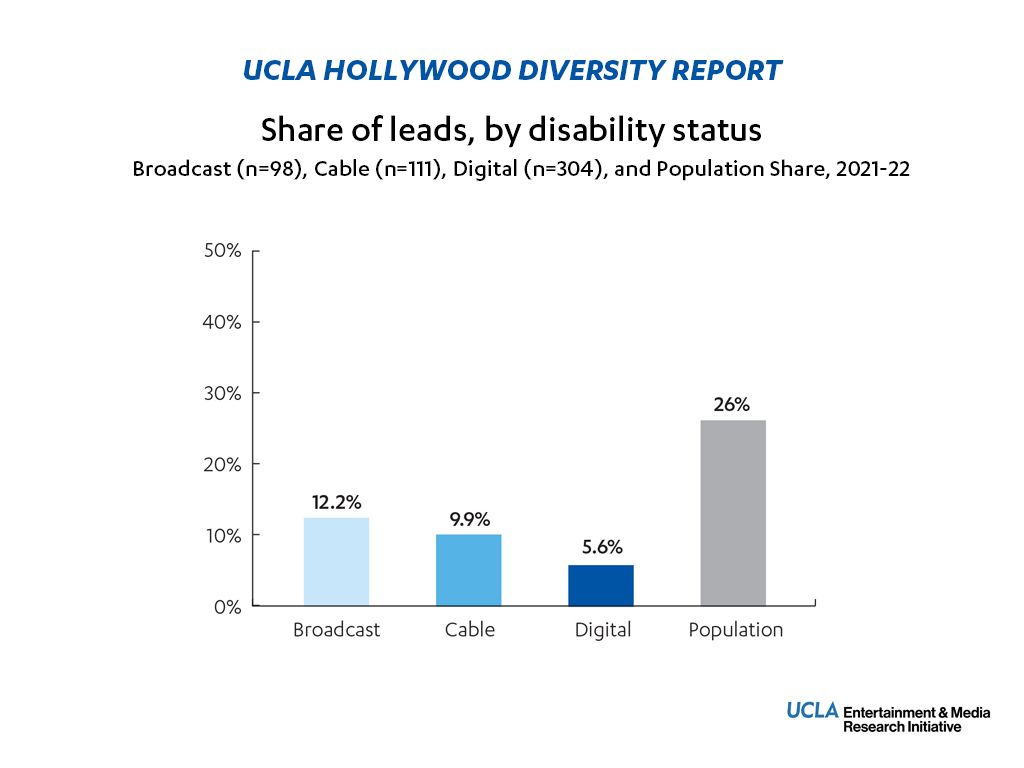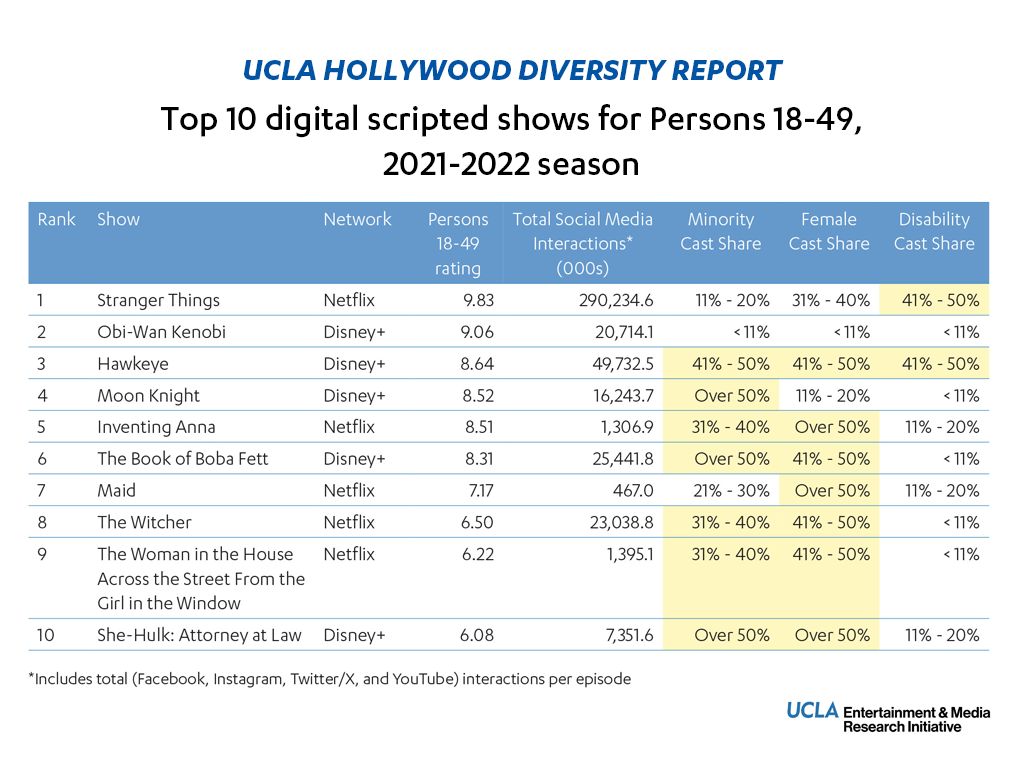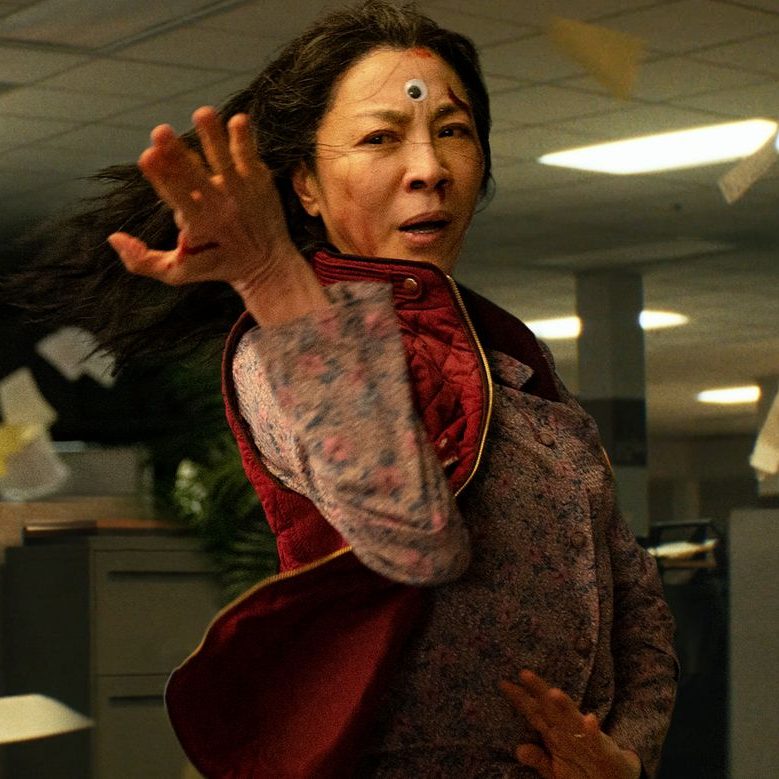View the original post on UCLA Newsroom.
Key takeaways
- The report includes the first comprehensive analysis of the disability status of actors, finding they are severely underrepresented across the three platforms.
- More of the top broadcast and digital shows for viewers across race, ethnicity, gender and age categories featured racially and ethnically diverse casts.
- For the first time, overall cast diversity reflected the population across all platforms following an upward trend over the last decade.
- Inequalities in episodic budgets and a contracting industry overall continue to have negative impacts on racial/ethnic and gender inclusion.
With the hot labor summer hitting Hollywood hard this year, the question of who gets hired in front of and behind the camera has never been more critical.
UCLA’s 10th annual Hollywood Diversity Report found more top TV shows featured racially and ethnically diverse casts during the 2021–22 season as overall cast diversity reflected the population across broadcast, cable and streaming. But the findings are a mixed bag of incremental progress as people of color remained underrepresented as leads in broadcast and digital, and actors with a disability were clearly underrepresented among leads across all three platforms.
“We have closely examined the people and stories the industry chooses to invest in,” said Ana-Christina Ramón, director of UCLA’s Entertainment and Media Research Initiative, which produces the report. “Over the last decade, we’ve developed and refined this annual breakdown of cast, director, show creator, writer and audience. The data is clear: More work needs to be done.”
For the latest television report, researchers reviewed data for 521 live-action, scripted shows (99 broadcast, 112 cable and 310 digital) that aired in the 2021-22 season. They examined race/ethnicity and gender for key job categories, plus disability status for actors, to see who is actually being hired. The result is one of the most comprehensive and rigorous longitudinal studies of Hollywood and labor.
This year, the authors broadened their scope into other areas of representation, offering new insights around the disability status of almost 3,500 actors — regardless of the character they play on screen — and expanding cast analysis for the top shows to include gender and disability.

“We listened to what people wanted to know,” said Michael Tran, co-author of the report and a graduate student in sociology. “Now that more reliable data is available, we’re able to bring more visibility to communities, like those with disabilities, to the forefront so that more people from underrepresented backgrounds can be given opportunities, and to benefit the entire industry.”
Although actors with disabilities were rarely featured on the small screen, cast members with known disabilities were found more often in digital, with highly rated shows like “Stranger Things” on Netflix and Marvel’s “Hawkeye” on Disney+ falling within the 41% to 50% disability cast share interval. Although less than 1% of shows on each platform had visible or physical disabilities, the success of these particular shows suggests viewers are not turned off by content that features actors with disabilities.
The authors also found casts finally reached more representative levels of race and ethnicity across all platforms. More shows featured diverse casts, with the plurality of all offerings presenting a cast that was majority-minority: 36.0% of broadcast, 35.8% of cable and 36.5% of digital.
With new shows making up more than half of the shows during the 2021–22 television season, which was filmed almost entirely under pandemic protocols, diversity in creators’ race, ethnicity and gender increased for broadcast and cable, while digital remained steady despite a higher number of digital shows. The share of creators of color for new shows rose to 26.7%, and share of people of color and women credited in the writers’ room also increased.
Audiences favor shows with diverse casts and content that comes from an authentic perspective. Broadcast scripted shows with casts featuring 31% to 40% people of color had the highest median ratings among white, Black, Latinx, and Asian households, as well as viewers ages 18-49. In addition, shows with at least 31% credited writers of color landed well with audiences: They had the highest median ratings for broadcast viewers 18-49 along with Latinx and Asian households, and came in second for white and Black households.
Among the top 10 shows, “Moon Knight” on Disney+ and CBS’ “The Equalizer,” which had people of color making up the majority of the cast, garnered high ratings from multiple demographics. Half of the top shows casts for each audience group studied were gender-balanced or starred more women than men.
But, Ramón says, studios still hedge their bets when it comes to supporting women and people of color.
Women and people of color continue to be underrepresented in the most important roles. The increase in cast diversity was not reflected in lead roles, particularly in broadcast and digital, as people of color were in more supporting roles. Both women and people of color were underrepresented among the 817 show creators across each platform type.

Darnell Hunt, the executive vice chancellor and provost at UCLA who co-founded the report, believes Hollywood can do better and it is in their financial interest to further embrace diversity.
“Over the past 10 years, we’ve seen that audiences expect and respond financially to diverse content in both film and television,” Hunt said. “But we’ve also recently seen the loss of leaders in diversity-related positions within the industry, the axing of pipeline initiatives and training programs, the cancellation of shows led by women and people of color — all in the name of cutting costs.”
Similar to last year’s findings, white male creators were supported with bigger budgets: About half received more than $3 million per episode regardless of platform and around 2% received more than $20 million in digital and cable.
Studios continued to provide less funding to projects led by people of color and white women, with the majority receiving less than $3 million across all platforms. This was especially seen in broadcast for white female creators (79.3%) and in digital for creators of color (71.6%).
As discussions of labor and equity, especially in the age of AI and streaming, continue to come to the forefront, the researchers underscored the importance of their report in offering a nuanced reflection of who was given opportunities and support prior to the recent labor strikes. It will offer a critical point for comparison in future reports that analyze how the studios respond to this current state of flux, especially as creators face even more obstacles to getting projects greenlit.
Ramón advised executives to heed the data when it comes to content.
“Increasingly diverse audiences gravitate toward more inclusive offerings,” Ramón said. “They not only want diverse representation, they want it to come from an authentic perspective that reflects their lived experiences. They want to see their stories on the screen.”
Other findings from the new report:
- Women were well represented in lead acting roles on scripted shows on broadcast at 52.6%, marking the first time they’ve reached parity since the 2011–12 and 2012–13 seasons, with declines from the previous year for cable and digital.
- Actors of color reached their highest share of lead roles in broadcast, 32.6%, since the start of this report series but were still underrepresented. They also reached parity at 43.2% in cable series relative to the U.S. population but their share in digital decreased to 35.9%.
- Women of color made significant gains as writers for broadcast shows at 21.6% in 2020–21, up from 17.8% in 2020-21; cable shows at 23.4% from 20.9%; and digital at 22.1% from 18.9%.
- As with other categories, transgender and nonbinary actors had nominal representation across all shows tracked. Broadcast shows featured three transgender and two nonbinary actors, while cable had four transgender and six nonbinary actors in their casts. Digital saw an increase with 10 transgender and 17 nonbinary actors, from one transgender and seven nonbinary actors last year.



